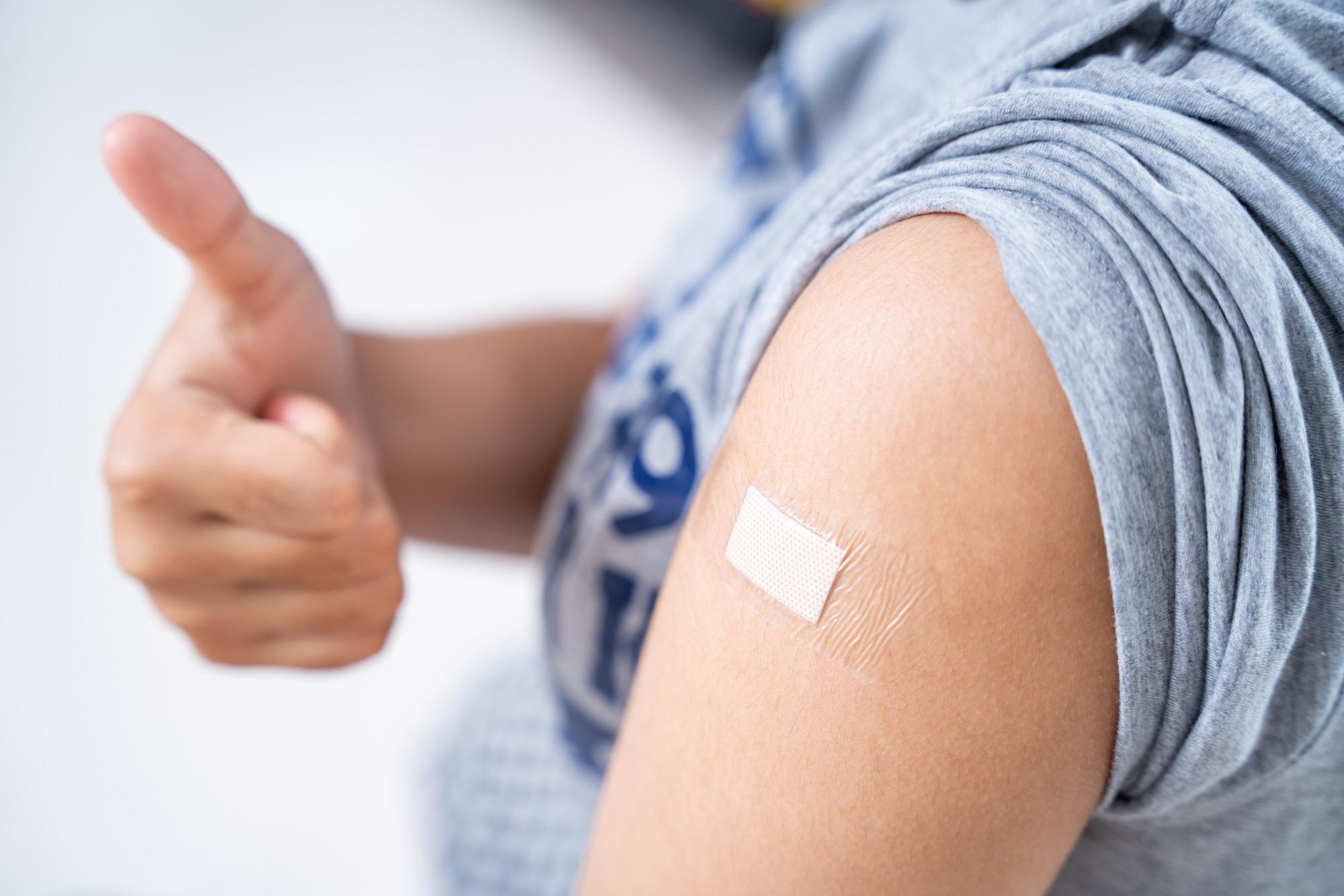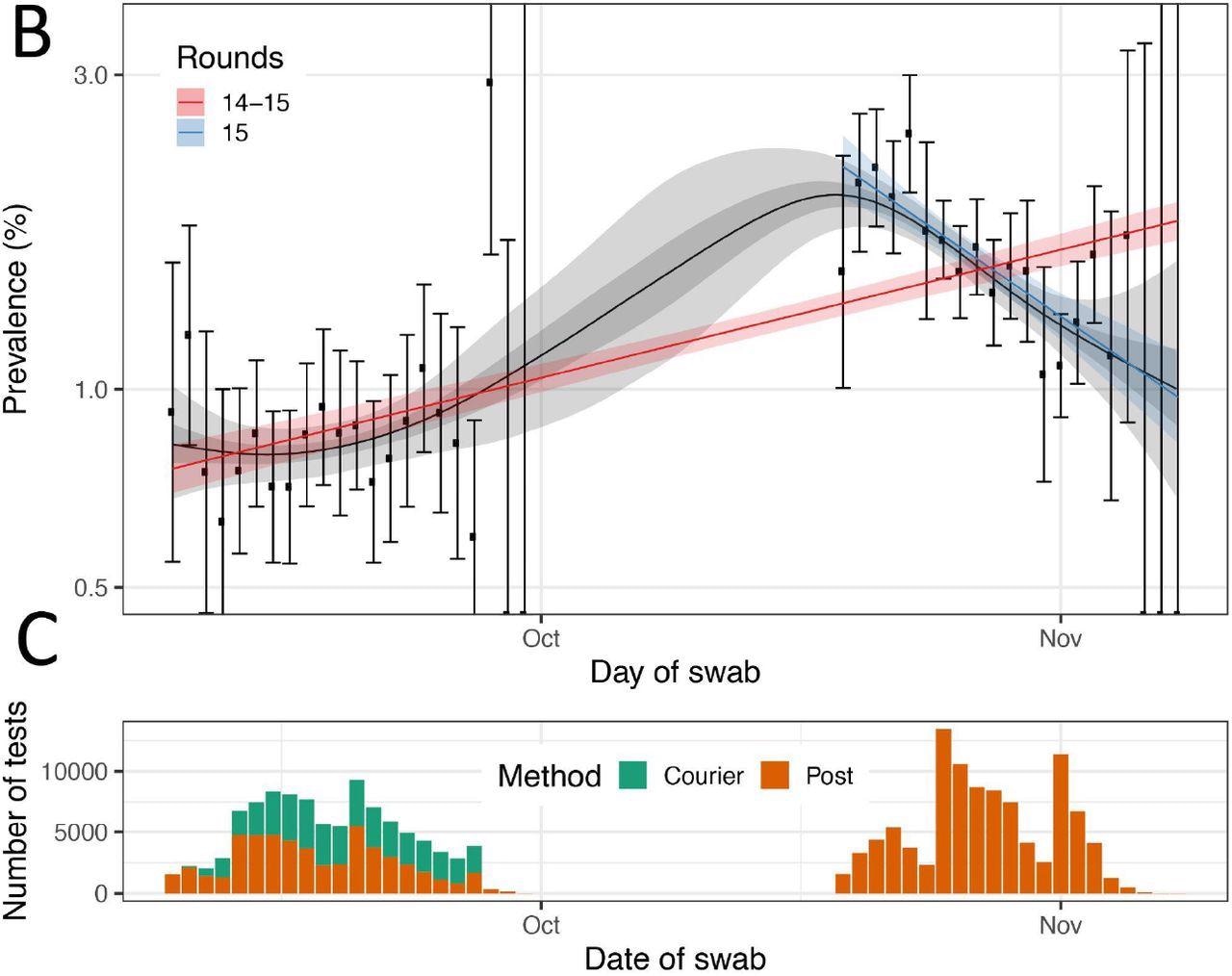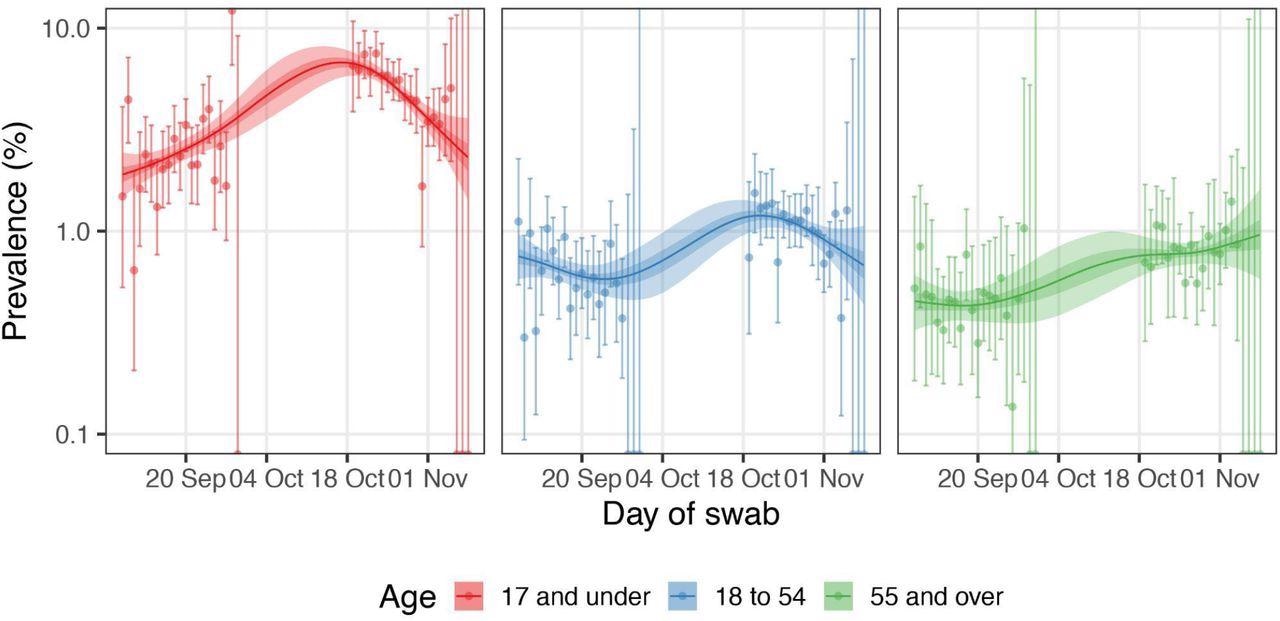The Real-time Assessment of Community Transmission-1 (REACT-1) study has been tracking the transmission of severe acute respiratory syndrome coronavirus-2 (SARS-CoV-2) throughout England since May 2020. SARS-CoV-2 is the cause of the ongoing coronavirus disease 2019 (COVID-19) pandemic.
The first survey report showed the decline of the first SARS-CoV-2 wave in England. The subsequent survey characterized the country's second and third waves. The third wave occurred due to the rapid spread of the SARS-CoV-2 Delta variant since May 2021. However, the second wave's peak was way higher than the other two wave peaks.
 Study: REACT-1 round 15 final report: Increased breakthrough SARS-CoV-2 infections among adults who had received two doses of vaccine, but booster doses and first doses in children are providing important protection. Image Credit: Tong_stocker / Shutterstock
Study: REACT-1 round 15 final report: Increased breakthrough SARS-CoV-2 infections among adults who had received two doses of vaccine, but booster doses and first doses in children are providing important protection. Image Credit: Tong_stocker / Shutterstock

 This news article was a review of a preliminary scientific report that had not undergone peer-review at the time of publication. Since its initial publication, the scientific report has now been peer reviewed and accepted for publication in a Scientific Journal. Links to the preliminary and peer-reviewed reports are available in the Sources section at the bottom of this article. View Sources
This news article was a review of a preliminary scientific report that had not undergone peer-review at the time of publication. Since its initial publication, the scientific report has now been peer reviewed and accepted for publication in a Scientific Journal. Links to the preliminary and peer-reviewed reports are available in the Sources section at the bottom of this article. View Sources
Background
In England, along with other countries in the UK, COVID-19 vaccination programs commenced in December 2020, prioritizing the vulnerable groups for vaccination first. As a result, the adult population has been offered two doses of the COVID-19 vaccine to help protect them from SARS-CoV-2 infection and help decrease mortality. Research has indicated that these vaccines have significantly reduced severe illness as well as mortality due to SARS-CoV-2 infection.
Studies have shown that individuals who have received two doses of COVID-19 vaccines have a lower risk of the Delta infection compared to the unvaccinated group. However, some breakthrough infections due to this variant have been reported.
A third COVID-19 vaccine, known as a booster vaccine, was recently offered, and by November 2021, more than 12 million people in the UK had received booster doses. Research from Israel found that SARS-CoV-2 booster vaccines were associated with a reduction of 11.3% in confirmed infections and a reduction of 19.5% in severe infections when compared to two doses of COVID-19 vaccines.
A New Study
A new report published on the medRxiv* preprint server has presented the findings of round 15 of the REACT-1 study. This study revealed the COVID-19 infection trend from mid-October to early November 2021 in England. A self-administered swab test and reverse-transcriptase polymerase chain reaction (RT-PCR) confirmed infection. The purpose of this study was to determine the effectiveness of the COVID-19 booster vaccination strategy and determine vaccination effectiveness against infection in children aged 12 to 17 years old.
About the Study
During this study, the primary variant that circulated was the Delta variant. Further, rapid vaccination programs, i.e., vaccinating all individuals above 12 years of age and above, as well as the implementation of a booster strategy, occurred. This study reported that compared to the previous rounds of data collection in September 2021, the prevalence of positive COVID-19 infection in England has significantly increased among school-aged children. However, the rate of infection was found to be lower among older people, i.e., individuals aged 65 years and above. This study further confirmed that the Delta variant and its sub-lineages had been the dominant circulating variant in England during the study period and also reported that AY.4.2. was less likely to cause symptomatic infection. At present, the spread of this sub-lineage is being closely monitored.
 (A). Daily weighted swab-positivity for all 15 rounds of the REACT-1 study (black points with 95% confidence intervals, left-hand y-axis) with P-spline estimates for swab-positivity (solid black line, shaded area is 95% credible interval). Changes in testing procedures are identified by vertical dashed lines. Geographic sampling procedure changed for rounds 12 onwards (red line), round 14 had half of the respondents’ swab tests collected by courier and the other half post their swab test (blue line) and for round 15 all respondents posted their swab test (green line).
(A). Daily weighted swab-positivity for all 15 rounds of the REACT-1 study (black points with 95% confidence intervals, left-hand y-axis) with P-spline estimates for swab-positivity (solid black line, shaded area is 95% credible interval). Changes in testing procedures are identified by vertical dashed lines. Geographic sampling procedure changed for rounds 12 onwards (red line), round 14 had half of the respondents’ swab tests collected by courier and the other half post their swab test (blue line) and for round 15 all respondents posted their swab test (green line).
The authors reported that amidst the circulation of the Delta variant and relaxation of all COVID-19 restrictions in England, the rate of infection surged from September to mid-October 2021. The decrease in the number of COVID-19 cases among school-going children may be related to the half-term break. Researchers further reported that the prevalence of positive swab tests among individuals living in larger households and those with children in the household was higher than in single-person homes and those without children.
 (B) Comparison of an exponential model fit to round 14-15 (red) and round 15 only (blue) and a P-spline model fit to all rounds of REACT-1 (black, shown here only for round 14 and 15). Shaded red and blue regions show the 95% posterior credible intervals for the exponential model, and the shaded grey region shows 50% (dark grey) and 95% (light grey) posterior credible intervals for the P-spline model. Results are presented for each day (X-axis) of sampling for round 14 and round 15 and the prevalence of infection is shown (Y-axis) on a log scale. Weighted observations (black dots) and 95% confidence intervals (vertical lines) are also shown. (C) Number of samples processed per day during round 14 and round 15. In round 14 the samples shipped by post are represented in orange, and those shipped by courier, in green.
(B) Comparison of an exponential model fit to round 14-15 (red) and round 15 only (blue) and a P-spline model fit to all rounds of REACT-1 (black, shown here only for round 14 and 15). Shaded red and blue regions show the 95% posterior credible intervals for the exponential model, and the shaded grey region shows 50% (dark grey) and 95% (light grey) posterior credible intervals for the P-spline model. Results are presented for each day (X-axis) of sampling for round 14 and round 15 and the prevalence of infection is shown (Y-axis) on a log scale. Weighted observations (black dots) and 95% confidence intervals (vertical lines) are also shown. (C) Number of samples processed per day during round 14 and round 15. In round 14 the samples shipped by post are represented in orange, and those shipped by courier, in green.
Scientists indicated that measuring the effectiveness of COVID-19 vaccines from observational data has a high risk of biased results. Scientists faced several challenges while estimating the vaccine effectiveness in the study period. This is because most adults above the age of 65 years were vaccinated in this round, and very few remained unvaccinated, as a result of which scientists could not compare the two groups properly. Also, the possibility of the declining immune response following vaccination might have led to an increased risk of breakthrough infections among individuals who received two doses of the COVID-19 vaccine. Scientists observed that unvaccinated and vaccinated groups differed in several important parameters and, hence, they were matched poorly.
 Comparison of P-spline models fit to all rounds of REACT-1 for those aged 17 years and under (red), those aged 18 to 54 years inclusive (blue) and those aged 55 years and over (green). Shown here only for the period of round 14 and round 15. Shaded regions show 50% (dark shade) and 95% (light shade) posterior credible interval for the P-spline models. Results are presented for each day (X-axis) of sampling for round 14 and round 15 and the prevalence of swab-positivity is shown (Y-axis) on a log scale. Weighted observations (dots) and 95% confidence intervals (vertical lines) are also shown.
Comparison of P-spline models fit to all rounds of REACT-1 for those aged 17 years and under (red), those aged 18 to 54 years inclusive (blue) and those aged 55 years and over (green). Shown here only for the period of round 14 and round 15. Shaded regions show 50% (dark shade) and 95% (light shade) posterior credible interval for the P-spline models. Results are presented for each day (X-axis) of sampling for round 14 and round 15 and the prevalence of swab-positivity is shown (Y-axis) on a log scale. Weighted observations (dots) and 95% confidence intervals (vertical lines) are also shown.
Scientists were able to properly estimate the effectiveness of the booster vaccine by comparing it with two doses of primary vaccination. They found that compared to primary vaccination, the booster vaccination strategy was way more effective in preventing SARS-CoV-2 infection and decreased the rate of mortality. However, the estimates provided in this study are less robust than a similar study conducted in Israel. Scientists also revealed the benefits of single doses of vaccines administered to children aged 12 years and showed that vaccination has significantly reduced the rate of hospitalization and mortality.
Conclusion
Although the swab positivity was high at the beginning of round 15, it fell with the uncertain trend later in October. The booster vaccination strategy has been found to be extremely effective in protecting individuals from severe SARS-CoV-2 infection and mortality compared to the two-dose primary vaccination regime. This study also highlighted that vaccinating the younger, school-going age groups also plays a crucial part in reducing virus transmission.

 This news article was a review of a preliminary scientific report that had not undergone peer-review at the time of publication. Since its initial publication, the scientific report has now been peer reviewed and accepted for publication in a Scientific Journal. Links to the preliminary and peer-reviewed reports are available in the Sources section at the bottom of this article. View Sources
This news article was a review of a preliminary scientific report that had not undergone peer-review at the time of publication. Since its initial publication, the scientific report has now been peer reviewed and accepted for publication in a Scientific Journal. Links to the preliminary and peer-reviewed reports are available in the Sources section at the bottom of this article. View Sources
Journal references:
- Preliminary scientific report.
Chadeau-Hyam, M. et al. (2021) REACT-1 round 15 final report: Increased breakthrough SARS-CoV-2 infections among adults who had received two doses of vaccine, but booster doses and first doses in children are providing important protection. medRxiv 2021.12.14.21267806; doi: https://doi.org/10.1101/2021.12.14.21267806, https://www.medrxiv.org/content/10.1101/2021.12.14.21267806v1
- Peer reviewed and published scientific report.
Chadeau-Hyam, Marc, Oliver Eales, Barbara Bodinier, Haowei Wang, David Haw, Matthew Whitaker, Joshua Elliott, et al. 2022. “Breakthrough SARS-CoV-2 Infections in Double and Triple Vaccinated Adults and Single Dose Vaccine Effectiveness among Children in Autumn 2021 in England: REACT-1 Study.” EClinicalMedicine 48 (June): 101419. https://doi.org/10.1016/j.eclinm.2022.101419. https://www.thelancet.com/journals/eclinm/article/PIIS2589-5370(22)00149-3/fulltext.